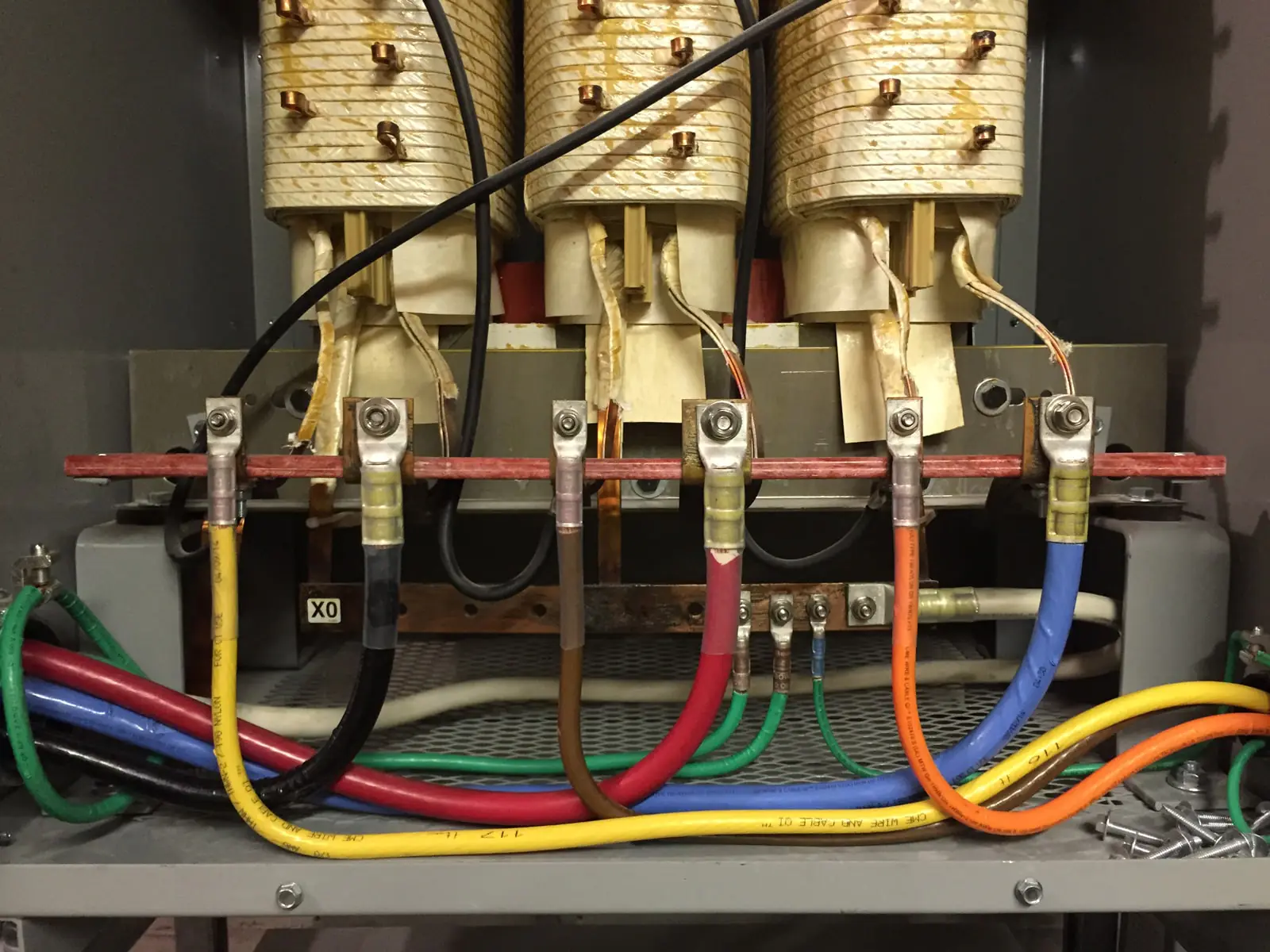Even though electricians are plenty familiar with the equipment inside an electrical room, many people don't expect them to help design the room. The general idea is that the architects and engineers do all the planning on electrical projects. The electricians do the installation, but many people don’t expect them to be heavily involved in the planning process.
However, electricians are the ones who understand the conditions of the equipment and space. Their knowledge informs the design process and benefits teammates in other trades.
We have put together some tips that electricians consider when planning and laying out electrical rooms. The tips and codes mentioned in this article were outlined by Phil Barr, leader of Kalos's Electrical Division.
Table of Contents
Understand the room and its boundaries

Electrical rooms are usually tiny for a reason. The building owners and managers aren’t trying to offend electricians or make their lives harder by giving them a small working space.
Building owners aren’t making money from those rooms, so they try to maximize their profit by keeping as much open commercial space as possible. While their rationale won’t make the electrician’s job easy, it’s good to understand the working space and determine how to make the most of it.
Even though there’s a good chance that the electrical room will be small, there are different considerations for new and existing rooms. If you’re working with a space that already exists, you must think about the present boundaries. There may be lighting in the room that you need to work around and leave ample space for.
If you’re building a new room, we recommend knowing the exact equipment you plan to use early on. That way, you can have an accurate idea of your clearance and dedicated space for a room that doesn’t exist yet.
Communicate with everyone on the project
Designing an electrical room is a team effort where several trades come together. An electrician will typically work with engineers, architects, and a general contractor. Each person brings different knowledge and experience to the table.
The electrician is the one who’s probably the most knowledgeable about the practical elements of the job. They know their electrical equipment and are likely familiar with the codes they must follow.
It’s up to the electrician to communicate their knowledge with the other trades as issues arise. That way, design changes can be made as early as possible. Don’t wait until the last minute to voice your concerns.
It’s also not a good idea to deviate from the original plans without seeking approval first. Keep team members in the loop at all times and get your suggestions approved.
Consider the ampacity of your equipment

The ampacity of your equipment dictates quite a few of the safety features of your electrical room.
For example, equipment of a higher ampacity requires outward-swinging doors with panic hardware or dual entry/egress to the space. That requirement will affect the architect’s design. The electrician should let the other trades know about the equipment’s ampacity and required safety features early on.
Ampacity also partially determines how many means of egress you will need in an electrical room. The higher the ampacity, the greater the risk for serious injury. If the equipment is over 6 feet wide and has over 1200 amps, the room needs at least two means of egress.
Plan your means of egress
Egress is the ability to leave a room. Doors are the only means of egress in electrical room planning.
We design egresses for safety, which is why many electrical rooms have multiple doors with panic hardware. If someone gets injured on the job, it should not be difficult for them to leave the area and seek help.
The idea is that an impaired worker shouldn’t have to fumble around for an exit and risk further injury. An egress should always be within reach.
Mind the other systems in your space
The electrical room isn’t just for electric systems.
The electrical room will likely have mechanical systems that you will need to be aware of. Ventilation systems may also be necessary within the space. You will need to include these things in your plans.
It’s also not uncommon to see fire sprinklers in electrical rooms. You’ll need to keep that in mind when you’re configuring your dedicated space. You usually need at least 6 feet of dedicated electrical space between the equipment and the structural ceiling. Nothing can be in that space. Anything above that space is fair game, though.
Be prepared to protect your electrical equipment from sources of water with drip pans. Electricity and water make a deadly combination.
When you consider the other systems and work around them, it will make it easier for you to lay your conduits out and make space for your overhead wires. You can keep everything tidy as you work, making the equipment and its parts easier to access later.
Be sensible about clearance
Typically, the minimum working clearance will be 3 to 3 ½ feet from the leading edge of the equipment. There may be exceptions to the rule where you will need more working clearance.
In some cases, the minimum clearance may double to 6 or 7 feet. Doorways may also affect your working clearance, so consider the impact of your egress placement.
Working clearance also factors in the width of the equipment. In general, the minimum width will be 30 inches. Placing panels next to each other can give you more room. The minimum clearance has to be 30 inches across the entirety of the equipment. The individual panel lengths can be less than 30 inches as long as the sum of all panels’ widths is above 30 inches.
The most important thing you can do is be mindful of the clearance codes and plan your electrical room accordingly.
The key to planning electrical rooms is to avoid assuming that everyone on your team knows the equipment and clearance codes. Electricians fill in the knowledge gaps during the planning process.
When everybody shares their ideas and concerns, laying out a safe electrical room can be a relatively seamless process.






